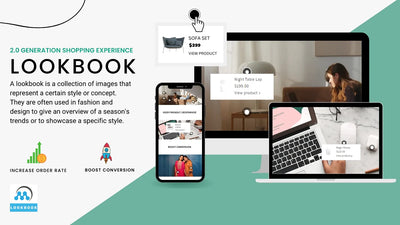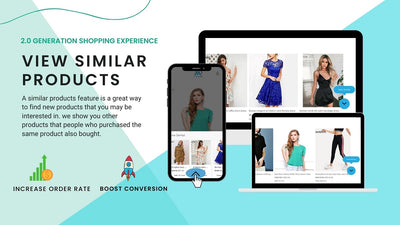The Essential Guide to Shopify Speed Optimization Services in 2024

In today's fiercely competitive e-commerce world, the speed of your Shopify store can determine your success or failure. As technology advances and consumer expectations grow, ensuring your Shopify site is both functional and fast is crucial. This guide delves into the most current technologies and strategies for Shopify speed optimization in 2024, guaranteeing a smooth shopping experience for all your customers.
Introduction to Shopify Speed Optimization
Speed optimization isn't just a technical requirement; it's central to enhancing user experience and improving SEO. A fast-loading site keeps customers engaged, boosts your conversion rates, and enhances your visibility on search engines. As we move through 2024, with increasingly sophisticated web technologies and greater consumer demands, optimizing your Shopify store's speed has become essential.
Why Is Speed Optimization Crucial in 2024?
- Enhanced User Experience:
- Customers expect quick responses. Even slight delays can frustrate users, increasing bounce rates and undermining satisfaction.
- Better SEO Rankings:
- Google continues to prioritize fast-loading sites. A quicker site means better search rankings and more organic traffic.
- Improved Conversion Rates:
- Speed influences profitability directly. Research consistently shows that faster sites achieve higher conversion rates.
Advanced Technologies Boosting Shopify Speed in 2024
- Progressive Web Apps (PWAs): PWAs provide app-like experiences directly on the Shopify platform, loading instantly and significantly enhancing speed over traditional web pages.
- Advanced Image Compression: New tools and algorithms in 2024 offer more effective compression, reducing image sizes without losing quality, thus speeding up load times.
- Headless Commerce: Shopify's adoption of headless commerce allows separate operations of front-end and back-end processes, enabling the use of faster, more flexible technologies for user interfaces.
- Edge Computing: Processing data closer to the user reduces latency, speeding up load times across different geographic locations.
- Automated Performance Testing Tools: AI-powered tools now automate the monitoring and optimization of Shopify store speeds, streamlining continuous speed improvements.
Incorporating Core Web Vitals into Shopify Speed Optimization
As part of optimizing your Shopify store's speed, it's essential to understand and improve Core Web Vitals, a set of specific factors that Google considers important in a webpage's overall user experience. Core Web Vitals are made up of three specific page speed and user interaction measurements: largest contentful paint (LCP), first input delay (FID), and cumulative layout shift (CLS). Optimizing these factors can greatly enhance the user experience and contribute to higher SEO rankings.
Understanding Core Web Vitals
- Largest Contentful Paint (LCP)
- What It Measures: LCP gauges the time it takes for the main content of a page to load. An ideal LCP measurement is 2.5 seconds or faster.
- How to Optimize: To improve LCP, reduce server response times, enable lazy loading for images and videos, and remove any unnecessarily large CSS files that might be blocking the page from rendering quickly.
- First Input Delay (FID)
- What It Measures: FID measures the time it takes for a page to become interactive. To provide a good user experience, FID should be 100 milliseconds or less.
- How to Optimize: Minimize (or defer) JavaScript; it cannot be processed until the entire page is loaded. Ensuring your JavaScript is not blocking other elements from loading can significantly improve FID.
- Cumulative Layout Shift (CLS)
- What It Measures: CLS assesses how often users experience unexpected layout shifts. A low CLS helps ensure that the page is delightful. Aim for a CLS score of 0.1 or less.
- How to Optimize: Use set size attribute dimensions for any media (video, images, etc.), and advertisements can help avoid unexpected layout shifts. Also, avoid inserting new content above existing content, unless in response to user interactions.
Implementing Shopify Speed Optimization Services
Initial Speed Audit:
- Start with a comprehensive speed audit using tools like Google PageSpeed Insights. This identifies areas for improvement and sets a benchmark for optimization efforts.
Optimizing Code and Content:
- Reduce the size of CSS, JavaScript, and HTML files. Implement lazy loading for images and asynchronous loading for non-critical resources.
Regular Monitoring and Updates:
- The dynamic nature of e-commerce necessitates continuous monitoring and regular updates. Establish a routine to keep your store optimized as new content is added and Shopify updates its platform.
Conclusion: Securing Your Shopify Store's Future
Investing in speed optimization is not just about boosting current performance—it's about preparing your business for the future. As technologies advance and consumer behaviors shift, staying at the forefront of speed optimization ensures that your Shopify store remains relevant and competitive.
For deeper insights and expert guidance on optimizing your Shopify store, visit our dedicated Shopify speed optimization page at Meroxio. You'll find comprehensive resources and support to maintain your store at the cutting edge of e-commerce performance.
FAQs About Shopify Speed Optimization
- How often should I conduct a speed optimization review?
- Aim for a full review annually or bi-annually, supplemented by ongoing monitoring.
- Can speed optimization affect my store's functionality?
- When done correctly, it should enhance functionality, making your site faster and more responsive without detrimental effects.
- Is using external apps for speed optimization necessary?
- While not mandatory, specialized apps can significantly enhance speed and efficiency, particularly for image-heavy stores.
Staying proactive with speed optimization ensures your Shopify store continues to meet customer expectations and thrive in the evolving online retail landscape.










